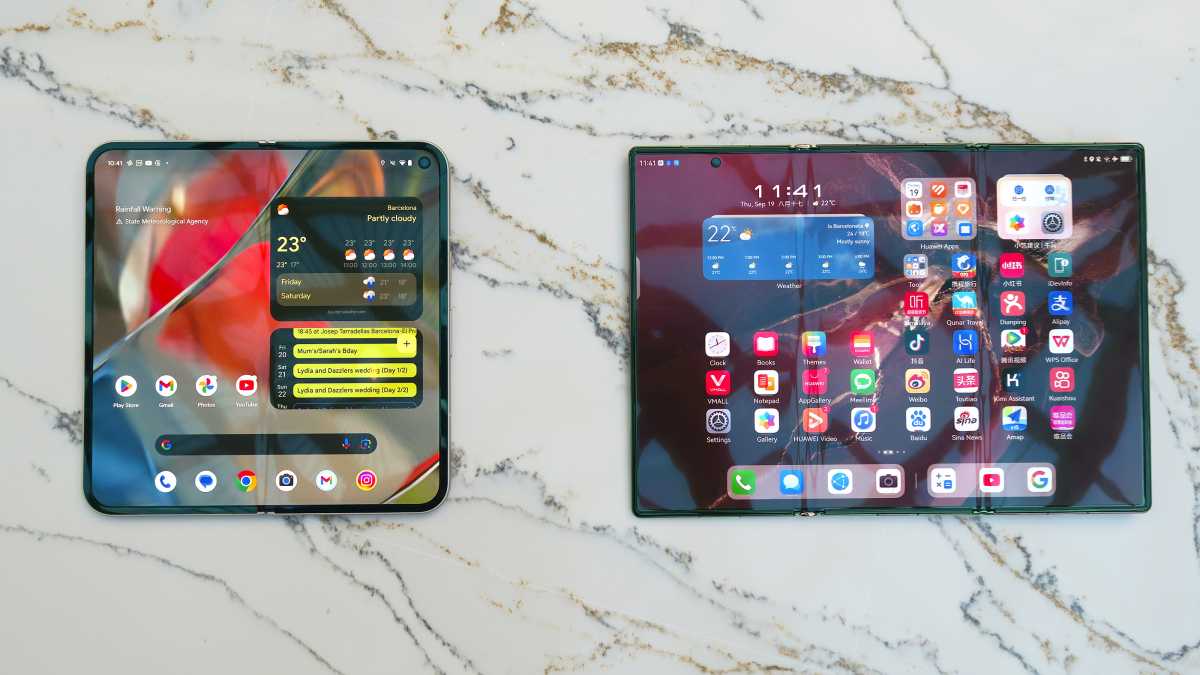Xiaomi is set to shake up the foldable phone market with its upcoming trifold smartphone.
This is expected to be Xiaomi’s first three-pronged model, joining an increasingly competitive foldable phone market that includes brands like Samsung, Huawei and others.
Below is a detailed breakdown of what we currently know, including its expected release date, price, and specifications.
When will Xiaomi’s trifold phone be released?
According to SmartPrix, Xiaomi’s first trifold phone, named “Zhuque”, is expected to debut in early 2025with a more refined three-pronged model possibly arriving in 2026.
Rumors suggest that Xiaomi could show off a prototype at Mobile World Congress (MWC) in February 2025, but it’s likely that the actual release will happen later in the year.
As for the follow-up model, speculation suggests a release in Q1 2026. The model number “26013VP46C” indicates a January 2026 timeline for the launch of this second tri-fold phone.
However, both devices would remain exclusive to the Chinese market, at least initially.

Foundry | Alex Walker-Todd
How much will Xiaomi’s trifold phone cost?
Although there is no official information on the pricing of Xiaomi’s trifold phone yet, we can estimate based on the cost of similar foldable devices.
Top foldable phones like the Samsung Galaxy Z Fold 6 and Huawei Mate
Given the cutting-edge tri-pronged technology, Xiaomi’s ‘Zhuque’ phone could start in the £2,000/$2,000 range or above, making it one of Xiaomi’s most expensive phones.
Exclusivity in the Chinese market could also affect the price globally, as importing the device would incur additional costs for interested buyers outside of China.
What features will Xiaomi’s trifold phone have?
Design and build
As SmartPrix reports, Xiaomi’s trifold phone could sport a buttonless design, a bold move that could set it apart from other foldables. The device could then rely on gesture controls, pressure-sensitive edges or voice commands for navigation.
The phone is also expected to fold in a manner similar to Huawei’s Mate XT Ultimate, with a large screen that can fold into three, leaving only part of the screen visible when folded.
The device may be sleek, but still requires a big camera island due to its thin foldable segments.
Screen and speakers
The tri-fold design will likely feature a large, uninterrupted screen when fully unfolded, providing a tablet-like experience. This will be Xiaomi’s first attempt with a tri-fold mechanism, and it could also include an under-display selfie camera for a seamless look across the entire screen.
Details on screen resolution or speaker technology are not yet confirmed, but given Xiaomi’s history with high-end displays, expect an OLED panel with performance rates. high refresh rates and possibly advanced speaker technology integrated into the screen.

Foundry | Alex Walker-Todd
Performance
Under the hood, Xiaomi’s trifold phone is expected to be powered by Qualcomm’s Snapdragon 8+ Gen 4 or even the Snapdragon 8 Gen 5 processor for the 2026 model. This cutting-edge chipset will likely be built on the new Qryon cores. generation, promising lightning-fast performance.
Paired with at least 12GB of RAM and up to 1TB of internal storage, this phone could be a powerhouse that can handle multitasking, gaming, and heavy apps with ease.
Cameras
The phone will likely feature a fancy camera setup, although it’s unclear how many lenses will be included.
The patent images suggest a smaller camera island compared to Huawei’s Mate XT Ultimate, but camera performance could still be robust.
Expect multiple high-resolution lenses for standard, wide-angle, and eventually telephoto shooting, as well as cutting-edge software enhancements like AI-based features and Night Mode.
Battery and charging
Foldable phones typically require big batteries to power their big screens, and Xiaomi’s trifold phone should be no different.
Expect a battery capacity of at least 5,000mAh, as well as fast charging capabilities, which could support up to 100W wired charging and 50W wireless charging.
Software
Xiaomi’s tri-fold phone will likely run on HyperOS, based on the latest version of Android available at the time. Given the phone’s unique form factor, expect Xiaomi to include custom software features designed for multitasking and utilizing the phone’s foldable screen.
However, SmartPrix points out that previous experiences with Xiaomi’s concept devices, like the MIX Alpha, suggest that software updates might be limited. So this is something to watch out for if the phone is released as a limited edition concept rather than in mass. market device.
That’s everything we currently know about Xiaomi’s expected trifold phone. In the meantime, check out the best foldable phones it might face in the future.
Table of Contents








